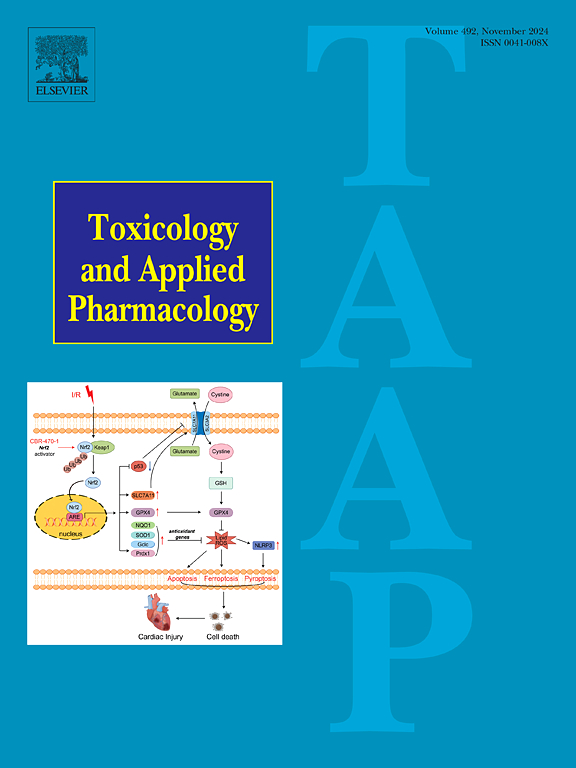Protective effect of hydrogen-rich water on spermatogenesis in high-fat diet obese rats
IF 3.3
3区 医学
Q2 PHARMACOLOGY & PHARMACY
引用次数: 0
Abstract
Obesity can impair spermatogenesis by various mechanisms such as decreased sperm concentration and increased oxidative DNA damage. Hydrogen-rich water (HRW) possesses therapeutic antioxidant properties that may help offer protection to sperm. This study aimed to investigate the therapeutic potential of HRW on spermatogenesis dysfunction in rats with high-fat diet (HFD)-induced obesity. In this experiment, thirty male Wistar Albino rats were divided into three groups. 1) Control group: fed a normal diet, 2) Obese group: fed a HFD (45 % fat), and 3) HFD + HRW group: fed a high-fat diet and received HRW. HRW (1.5 mM) was administered orally every day. After 16 weeks, blood and tissue samples (testis and epididymis) were collected for biochemical and histopathological analysis. Serum LH, FSH and testosterone and oxidative and antioxidative markers, malondialdehyde (MDA), superoxide dismutase (SOD), and total thiol groups were measured in testis and epididymal tissues. The results showed that the HFD significantly increased food intake, body weight, and lee index, all of which were reduced in the HRW-treated obese group. Testis weight, sperm count, Serum LH and histological evaluation of testis including Sertoli and spermatogonia cell counts were significantly lower in the obese group but improved with HRW treatment. Additionally, HRW treatment increased the luminal diameter of seminiferous tubules, epididymal epithelia height, tissue SOD, and total thiol levels, while reducing MDA level in the testis. This study showed that administration of HRW can improve spermatogenesis in obese animals by reducing oxidative stress and ameliorating histological changes in the testis and epididymis, suggesting its potential benefits in combating high-fat diet-induced reproductive dysfunction.
富氢水对高脂饮食肥胖大鼠精子发生的保护作用
肥胖可以通过多种机制损害精子发生,如精子浓度降低和DNA氧化损伤增加。富氢水(HRW)具有治疗性抗氧化特性,可能有助于保护精子。本研究旨在探讨HRW对高脂饮食(HFD)诱导的肥胖大鼠精子发生功能障碍的治疗潜力。本实验选用雄性Wistar白化大鼠30只,分为三组。1)对照组:饲喂正常饲粮;2)肥胖组:饲喂高脂肪饲粮(脂肪含量45%);3)HFD + HRW组:饲喂高脂肪饲粮并进行HRW。HRW (1.5 mM)每天口服。16周后,采集血液和组织样本(睾丸和附睾)进行生化和组织病理学分析。测定睾丸和附睾组织血清LH、FSH、睾酮、氧化和抗氧化标志物、丙二醛(MDA)、超氧化物歧化酶(SOD)和总硫醇组。结果显示,HFD显著增加了食物摄入量、体重和lee指数,而hrw治疗的肥胖组均降低了这些指标。肥胖组的睾丸重量、精子数量、血清LH和睾丸组织学评价(包括支持细胞和精原细胞计数)均显著降低,但HRW治疗后有所改善。此外,HRW治疗增加了精小管管径、附睾上皮高度、组织SOD和总硫醇水平,同时降低了睾丸内MDA水平。本研究表明,HRW可以通过减少氧化应激和改善睾丸和附睾的组织学变化来改善肥胖动物的精子发生,这表明HRW在对抗高脂肪饮食引起的生殖功能障碍方面具有潜在的益处。
本文章由计算机程序翻译,如有差异,请以英文原文为准。
求助全文
约1分钟内获得全文
求助全文
来源期刊
CiteScore
6.80
自引率
2.60%
发文量
309
审稿时长
32 days
期刊介绍:
Toxicology and Applied Pharmacology publishes original scientific research of relevance to animals or humans pertaining to the action of chemicals, drugs, or chemically-defined natural products.
Regular articles address mechanistic approaches to physiological, pharmacologic, biochemical, cellular, or molecular understanding of toxicologic/pathologic lesions and to methods used to describe these responses. Safety Science articles address outstanding state-of-the-art preclinical and human translational characterization of drug and chemical safety employing cutting-edge science. Highly significant Regulatory Safety Science articles will also be considered in this category. Papers concerned with alternatives to the use of experimental animals are encouraged.
Short articles report on high impact studies of broad interest to readers of TAAP that would benefit from rapid publication. These articles should contain no more than a combined total of four figures and tables. Authors should include in their cover letter the justification for consideration of their manuscript as a short article.

 求助内容:
求助内容: 应助结果提醒方式:
应助结果提醒方式:


